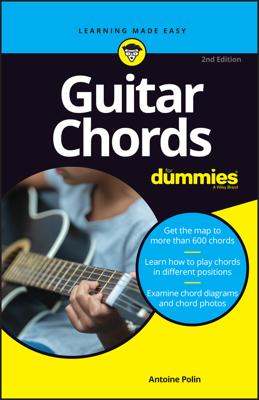Audio Transcript
When several individual notes are played together, and of course with the guitar — we mean several — individual strings played together, they form a chord. And we're going to talk about major chords. Now major chord has a sound that you might call a happy sound. As compared with a minor chord which has what you might call a sad sound.
Some of the easiest chords to play are called open chords, they're called that because they use some open strings. You don't have to finger every note that you're going to be playing in the chord. Some of them are just taken care of by the sound of an open string.
The chord diagram will show you exactly what to do with all of your fingers that are needed for the chord. First of all, it will tell you what number finger to use and it's simply; finger one, finger two, finger three, finger four. Then it will tell you what string to put the finger on and what fret to put the finger on. Once you got all the fingers in place that are called for, you also need to consider what do with your open strings. If an open string is not to be used, there'll be an X by it on the diagram. If an open string is to be used, there’ll be an O by it in the diagram. And this will account for all the strings in the chord.
Here's how you would play the five basic open chords. We'll start with the "C" chord, string by string; string 6 not used, string 5, fret 3, finger 3…string 4, fret 2, finger 2…
String 3 open…string 2, fret 1, finger 1…string 1 open…and the chord sounds like this…
Here's how you would play the "D" chord. String 6 is not used, string 5 is not used, string 4 open…string 3, fret 2, finger 1…string 2, fret 3, finger 3…string 1, fret 2, finger 2…and the chord sounds like this…
The "E" chord is played like this. String 6 open…string 5, fret 2, finger 2…string 4, fret 2, finger 3…string 3, fret 1, finger 1…string 2 open, string 1 open…and the chord sounds like this…
Here’s how to play a "G" chord. String 6, fret 3, finger 2… string 5, fret 2, finger 1…string 4 open…string 3 open…string 2 open…string 1, fret 3, finger 3…and the chord sounds like this…
Some chords have an alternate arrangement of finger placement and this is true of the "G" chord. So here's another way to play the "G" chord. String 6, fret 3, finger 3…string 5, fret 2, finger 2…string 4 open…string 3 open…string 2 open…string 1, fret 3, finger 4…and here’s how the chord sounds…
Here's how to play an "A" chord. String 6 is not used, string 5 open…string 4, fret 2, finger 1…string 3, fret 2, finger 2…string 2, fret 2, finger 3…string 1open…and the chord sounds like this…
Here's an alternative way to finger the "A" chord. Again, string 6 is not used, string 5 open…string 4, fret 2, finger 2…string 3, fret 2, finger 1…string 2, fret 2, finger 3…string 1 open…and the chord sounds like this…
Here's one more way to play an "A" chord. In concept, it's much simpler, cause you only use one finger, but it can be difficult to place that finger exactly right. Here's how this one goes. String 6 not used, string 5 open…string 4, fret 2, finger 1…string 3, fret 2, finger 1…string 2, fret 2, finger 1…and string 1 open…and the chord sounds like this…
Learning the five basic open major chords gives you a very good foundation for playing songs. In fact, using only these chords, there are thousands of songs you can play.

